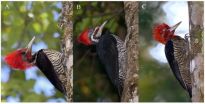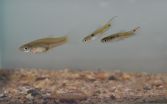(Press-News.org) Among children with in-hospital cardiac arrest with an initial nonshockable heart rhythm who received epinephrine (adrenaline), delay in administration of epinephrine was associated with a decreased chance of 24-hour survival and survival to hospital discharge, according to a study in the August 25 issue of JAMA.
Approximately 16,000 children in the United States have a cardiac arrest each year, predominantly in a hospital setting. Epinephrine is recommended by both the American Heart Association and the European Resuscitation Council in pediatric cardiac arrest. Delay in administration of the first epinephrine dose is associated with decreased survival among adults after in-hospital, nonshockable (pulseless electrical activity or asystole) cardiac arrest. Whether this association is the same for children has not been known, according to background information in the article.
Michael W. Donnino, M.D., of Beth Israel Deaconess Medical Center, Boston, and colleagues examined whether time to first epinephrine dose is associated with improved clinical outcomes in pediatric in-hospital cardiac arrest. The researchers performed an analysis of data from the Get With the Guidelines-Resuscitation registry and included U.S. pediatric patients (age END
Delay in administration of adrenaline and survival for children with cardiac arrest
2015-08-25
ELSE PRESS RELEASES FROM THIS DATE:
Genetic mutations may help predict risk of relapse, survival for leukemia patients
2015-08-25
In preliminary research, the detection of persistent leukemia-associated genetic mutations in at least 5 percent of bone marrow cells in day 30 remission samples among adult patients with acute myeloid leukemia was associated with an increased risk of relapse and reduced overall survival, according to a study in the August 25 issue of JAMA.
Approximately 20 percent of adult patients with acute myeloid leukemia (AML) fail to achieve remission with initial induction chemotherapy, and approximately 50 percent ultimately experience relapse after achieving complete remission. ...
Relapse, poor survival in leukemia linked to genetic mutations that persist in remission
2015-08-25
For patients with an often-deadly form of leukemia, new research suggests that lingering cancer-related mutations - detected after initial treatment with chemotherapy - are associated with an increased risk of relapse and poor survival.
Using genetic profiling to study bone marrow samples from patients with acute myeloid leukemia (AML), researchers found that those whose cells still carried mutations 30 days after the initiation of chemotherapy were about three times more likely to relapse and die than patients whose bone marrow was cleared of these mutations.
The study, ...
415-million-year-old malformed fossil plankton reveal that heavy metal pollution might have contributed to some of the world's largest extinction events
2015-08-25
Several Palaeozoic mass extinction events during the Ordovician and Silurian periods (ca. 485 to 420 to million years ago) shaped the evolution of life on our planet. Although some of these short-lived, periodic events were responsible for eradication of up to 85% of marine species, the exact kill-mechanism responsible for these crises remains poorly understood.
An international team led by Thijs Vandenbroucke (researcher at the French CNRS and invited professor at UGent) and Poul Emsbo (US Geological Survey) initiated a study to investigate a little known association ...
Pitt, Drexel, and NIH team up to study persistence of Ebola virus in wastewater
2015-08-25
PITTSBURGH--The historic outbreak of Ebola virus disease in West Africa that began in March 2014 and has killed more than 11,000 people since, has raised new questions about the resilience of the virus and tested scientists' understanding of how to contain it. The latest discovery by a group of microbial risk-assessment and virology researchers suggests that the procedures for disposal of Ebola-contaminated liquid waste might underestimate the virus' ability to survive in wastewater.
Current epidemic response procedures from both the World Health Organization and the ...
NASA sees Hurricane Loke moving north
2015-08-25
NASA's Aqua satellite passed over Hurricane Loke as it continued moving north in the Central Pacific early on August 25.
At 01:10 UTC on August 25, 2015 (9:10 p.m. EDT/Aug. 24) the Moderate Resolution Imaging Spectroradiometer or MODIS instrument aboard NASA's Aqua satellite captured an infrared image of Hurricane Loke. The image showed the thunderstorms wrapping around the northern quadrant of the storm from east to west of the storm's center. Despite attaining hurricane status, however, there was no visible eye although microwave data taken earlier indicated an eye. ...
Mimic woodpecker fools competing birds, but genetics expose its true identity
2015-08-25
LAWRENCE -- To look tougher, a weakling might shave their head and don a black leather jacket, combat boots and a scowl that tells the world, "don't mess with me."
But this kind of masquerade isn't limited to people. Researchers recently have revealed a timid South American woodpecker that evolved to assume the appearance of larger, tougher birds.
Visual mimicry lets the Helmeted Woodpecker (Dryocopus galeatus) live on the threatened Atlantic forest turf of two bigger birds -- the Lineated Dryocopus lineatus and Robust (Campephilus robustus) woodpeckers -- reducing ...
Researchers study tall larkspur toxicity in cattle
2015-08-25
August 24, 2015 - In the western foothills and mountain rangelands of the U.S., wild larkspurs (Delphinium spp.) are a major cause of cattle losses.
For the most part, grazing cattle can self-regulate consumption of larkspurs and avoid toxicity problems. However, when cattle eat too much, too quickly, or they eat low amounts continuously, toxicity can occur. Symptoms of toxicity include muscle weakness. Cattle also can become non-ambulatory and die.
In a recent study published in the Journal of Animal Science, researchers with the USDA-ARS Poisonous Plant Research ...
Female guppies become better swimmers to escape male sexual harassment
2015-08-25
In the animal world, sexual reproduction can involve males attempting to entice or force females to mate with them, even if they are not initially interested.
This male behaviour is driven by conflicts of interest over reproduction and exerts selective pressures on both sexes.
A new study on guppies led by the universities of Glasgow and Exeter has given scientists insight into how this behaviour can lead to physiological changes, much like those in athletes who train to perform better.
Dr Shaun Killen, of the University of Glasgow, said: "Sexual coercion of females ...
Catastrophic landslides post-earthquake
2015-08-25
Boulder, Colo., USA - In the last few months, it has once more become clear that large earthquakes can solicit catastrophic landsliding. In the wake of the Nepal earthquake, the landslide community has been warning of persistent and damaging mass wasting due to monsoon rainfall in the epicentral area. However, very little is actually known about the legacy of earthquakes on steep, unstable hillslopes.
Using a dense time series of satellite images and air photos, Odin Marc and colleague reconstructed the history of landsliding in four mountain areas hit by large, shallow ...
Hepatitis A-like virus identified in seals
2015-08-25
Washington, DC - August 25, 2015 - Scientists in the Center for Infection and Immunity at the Mailman School of Public Health have discovered a new virus in seals that is the closest known relative of the human hepatitis A virus. The finding provides new clues on the emergence of hepatitis A. The research appears in the July/August issue of mBio, the online open-access journal of the American Society for Microbiology.
"Until now, we didn't know that hepatitis A had any close relatives and we thought that only humans and other primates could be infected by such viruses," ...




